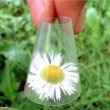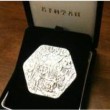Try 100 articles reading !!
2021/1/23 能木 update the sample of the personal file
2021/1/21 能木 必須項目修正
2021/1/17 能木 個人用ファイル・ビデオ用ファイル 追記
2021/1/16 能木 用語集部分追記
2021/1/12 能木
1. Get the article PDFs from your home / 学外から論文PDFにアクセス
need your 阪大ID
阪大のID・パスワードが必要です。
see the below
https://www.library.osaka-u.ac.jp/off_campus/(JPN)
https://www.library.osaka-u.ac.jp/en/off_campus_eng/(ENG)
2. 15 min for one article reading / 15分で論文1本読む
Before the reading, please remember why you select the article. It is your motivation for the article.
During 15 min (acceptable for only 5 min !), you will try to find the answer for your motivation.
After 15 min, you will describe your understanding in the file.
When you meet the unknown keyword, please survey its meaning on the web (not Wikipedia), and write it in the file.
That’s all !! Continue it for 100 articles.
論文を読む前に、何故この論文を選んだかを思い出してください。それが、この論文に対する、あなたのモチベーションです。
15分間で(5分でもOK)、モチベーションに対する答えを見つけて下さい。
15分経過したら、理解したことをファイルにまとめて下さい。
もし、知らないキーワードがあれば、ネットでその意味を調べて(Wikipedia除く)、それもファイルに記入してください。
以上です。それを繰り返して、論文100報読んでください。
3. One article for one page in personal file / 個人用まとめファイル、1ページに論文一つ
Prepare the personal ppt file when you read the article. This section explain how to prepare your personal file.
論文を読む際、パワーポイントなどで個人用まとめファイルを作成しましょう。本節では、個人的なまとめファイルの作成方法を説明します。
Don’t forget the basic rules / 下記ルール、お忘れなく。
No abbreviations / 略称の使用禁止
No question & negative sentences / 疑問文・否定文禁止
This is the sample of the personal ppt file / こちら個人用まとめファイルのサンプルです。
Please select the best from 9 patterns based on your reading motivation.
論文選びのモチベーションに応じて、9つのサンプルから最適なものを選んでください。
Sample of the personal ppt file
[required items / 必須項目]
Strong connection between the pictures & the sentences !!
When you pick up the picture, you must explain it by the sentence.
When you write sentences, you must prepare the supporting pictures.
図と文章は、強く結び付けて!
図を載せたら、その図を文章で説明する。
文章を書いたら、その内容を説明する図を準備する。
3-1. Article title, Author name, Published year, and Journal name
3-2. DOI number URL “https://doi.org/(doi number)”
https://www.chem-station.com/blog/2008/07/-doi.html
3-3. Article citation number & Journal impact factor
3-4. Your motivation & its answer
Write “Why did you select this article?””
Write “Answer for your motivation”. Namely, it is your impression for this article. For example…
”Disappointed. There is only information what I have already known.”
”Too difficult for me, so I cannot find the answer.”
”Happy ! My idea is drastically improved by the sentence of @@@@@”
3-5. Pick up the evidence from the article, corresponding with your answer.
3-6. One sentence to explain this article by yourself (NO copy the article title. NO question sentence.)
3-7. Evidence graph or picture for your one sentence or answer
3-8. Glossary / Your survey for the keywords
It is the most important parts for your article readings.
In the article, You will find the terms you don’t know.
So, you must survey the meanings by yourself, and record it in the file.
At that time, you must write the information source, where you got it.
If you do, you will be smarter. If not, you keep dull.. lol
3-1. 論文タイトル、著者名、発行年、雑誌名
3-2. DOI number URL “https://doi.org/(doi number)”
https://www.chem-station.com/blog/2008/07/-doi.html
3-3. 論文被引用数、雑誌インパクトファクター
3-4. 論文を選んだ動機とその答え
なぜ、その論文を選んだのか?動機を書いてください。
その動機に対する「答え」を書いてください。要するに、論文に対する印象です。例えば、次のような感じで。
「がっかり。知っていることしか書いてなかった」
「無理。。難しすぎた。。」
「大満足。@@@という文章が、とても役立った。」
3-5. その答えを導いた証拠を、論文からピックアップしてください。
3-6. 自分の言葉で、その論文を1行で説明(論文タイトルコピペNG。疑問文もNG)
3-7. 自分の1行の証拠となるグラフ・図などをピックアップ
3-8. 用語集、キーワード調査結果
論文を読むとき、これが最も重要です。
意味の分からない術語・キーワードに出くわすと思います。
その術語をピックアップし、自分で意味を調べて、ファイルに記載する。
その際、どこから、その情報を得たか(情報出典)も記載してください。
そうすれば、どんどん知識は増えます。しなかったら、何も変わりません。
[Additional / お好みで]
# Your impressions for this article
# Memo from this article
# その論文への感想・印象
# 論文から得た豆知識メモ
[Unnecessary / 不要]
# Detail results
# Copy & paste sentences from the article
# 詳細な結果
# 論文文章のコピペ
4. Video file for every 25 reading review/ 25報毎に振り返りビデオファイル
Whenever you read 25 articles, please make a review video or ppt file to understand your trend, spreading your idea, or what you understood.
Please check the basic information, when you prepare the video presentation file.
http://www.nogimasaya.com/favorite/filecheck/
25報の論文を読むたびに、振り返りパワポ・ビデオを作りましょう。そうすれば、自分の好み傾向・知識の進化・学んだことが理解できます。
ビデオ発表ファイルを作成する際、以下の基本情報を確認して下さい。.
http://www.nogimasaya.com/favorite/filecheck/
[Contents video file / ビデオファイルの内容]
# Overview of your readings (1-2 min)
Categorize your readings in some group.
# Your motivation & findings in each group (3-5 min)
Explain your motivation why you selected in each group.
State your impression/finding in each group.
Declare what kind of topic you will read in the next.
# My questions / Need your help (up to you, but this is the main part !!)
Let’s ask your question what you cannot understand term or knowledge in your reading.
It is up to you how many questions you ask.
# Reading lists in the appendix
Article title, First author name, & DOI number URL.
”https://doi.org/(doi number)”
https://www.chem-station.com/blog/2008/07/-doi.html
When you show the reading lists, it is very useful for others.
Someone, who read the same article, can exchange the information with you.
Someone, who want to read the article but not yet, can get the information from you.
# 読んだ論文の概要説明 (1-2 分)
読んだ論文を、幾つかのグループに分類分けして下さい
# 各グループごとに、選んだ動機・気づきを説明 (3-5 分)
各グループごとに、論文を選んだモチベーションを説明
各グループごとに、気づいたこと・印象を説明
次に読む論文トピックの説明
# 質問・教えて!! (時間はご自由に。メインパートです。)
論文を読んで分からなかったことを質問しましょう
質問は、幾つでも大丈夫
# 巻末付録として、読んだ論文リスト
論文タイトル、筆頭著者名、DOIナンバーURL
”https://doi.org/(doi number)”
https://www.chem-station.com/blog/2008/07/-doi.html
論文リストがあると、他の人にとって、とても有益な情報です。
既に論文を読んだ人は、あなたと情報交換できます。
これから論文を読みたい人は、あなたから事前に情報入手できます。
5. Continue in 4 times until 100 reading.
頑張って!!!
Additional information
© Department of Functionalized Natural Materials ISIR, Osaka University







